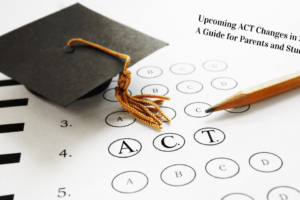
How to Use Social Media to Help with Academics
 Any way you slice it, ubiquitous social media platforms like Facebook and Instagram pretty much universally get a bad rap. But what if there was an academic upside to these apps and staples of the adolescence virtual experience? Interestingly, research increasingly shows that there just might be academic advantages to social media if used correctly. Below we’ll examine some of the ways that social media might actually help students.
Any way you slice it, ubiquitous social media platforms like Facebook and Instagram pretty much universally get a bad rap. But what if there was an academic upside to these apps and staples of the adolescence virtual experience? Interestingly, research increasingly shows that there just might be academic advantages to social media if used correctly. Below we’ll examine some of the ways that social media might actually help students.
Our world has officially moved beyond paper and pencil; more and more, we exist in a global culture where digital literacy is vital. This is not to say that basic fundamental skills are not important, but rather that a digital application of such skills is now highly valued by colleges and employers alike. The good news is that many teachers seem to agree: in a Pew Research Center survey on the impact of digital tools on students’ basic writing and composition skills, half of teachers surveyed said that digital tools made it easier for students to write and kept them more engaged and motivated. Within that sample, 96% of teachers agreed that digital technologies “allow students to share their work with a wider and more varied audience.” Imagine, then, the opportunities that abound for students to share their work and collaborate through platforms that they are already comfortable with and skilled at using such as blogs, Instagram, Snapchat, and Facebook.
Many educators refer to these new-world applications as twenty-first century skills. The focus on integration of digital platforms into traditional ways of teaching and learning is especially important for engaging today’s students. Interactive whiteboards, the use of wikis, blogs, and websites for students to share work, and the use of collaborative web-based tools like Google Docs have changed the landscape of learning. These twenty-first century skills are valuable for students entering the modern workforce and teachers are increasing relying on these methods of teaching. Teachers can benefit from taking a look at programs and workshops that can help them understand how to integrate new ways of teaching into their lesson.
So the natural question is how do use the powers of social media for academic good? While we certainly face serious issues like cyberbullying and other negatives of social media, honing our use to produce positive skills is a huge boon to students’ learning. Skills like critical thinking can be fostered through use of social media: college writing instructor Hannah Menendez says she aims to have students “think through what they read online…apply skills they learned in class…to social media platforms just as much as they do in their academic work.” Vital writing skills like finding strong evidence, recognizing bias, and evaluating source credibility can be applied to students’ use of social media. Essentially, updating the way we teach to align with the real world in which students live is important for maximizing the return on our educational investment.
If you’re now convinced that, perhaps, social media isn’t all bad, let’s explore what popular platforms might offer us as educational supports.
Facebook: The mother of all the social media platforms provides many opportunities for strengthening students’ analytical skill sets. A virtual whirlwind of information, Facebook gives voice to millions of different opinions. The problem, however, can be that not all are based in fact and some are just downright incorrect and completely biased. So challenging students to take what they read with a grain of salt and be critical thinkers who work to look for bias and examine source material can lay fundamental groundwork for doing research, writing papers and being overall critical thinkers.
Instagram: Creating an Instagram story is a great way to promote student creativity. With the days of the camcorder and the Polaroid all but gone, apps like Insta allow students a venue through which to be creative, funny, and impactful. A student in Menendez’s class, for instance, used Instagram to share stories of immigrants on campus through pictures and captions. This modernization of storytelling strikes at the basic human emotions captured in our great novels and films; it’s merely a new way of sharing the human experience, and one that students can truly become immersed in.
Blogs: Today, we share more of our lives with the world than we ever did before. We share pictures, quotes, opinions, announcements of life milestones like engagements, graduations and more all over the internet. Blogs allow us to share our musings and feelings in a way we used to be able to do only in personal journals and diaries, thus providing opportunities for micro-writing that can help students build up to success with longer, more involved assignments.
Written by Phil Lane
Contact us today to learn more about how our tutors can help your child!



